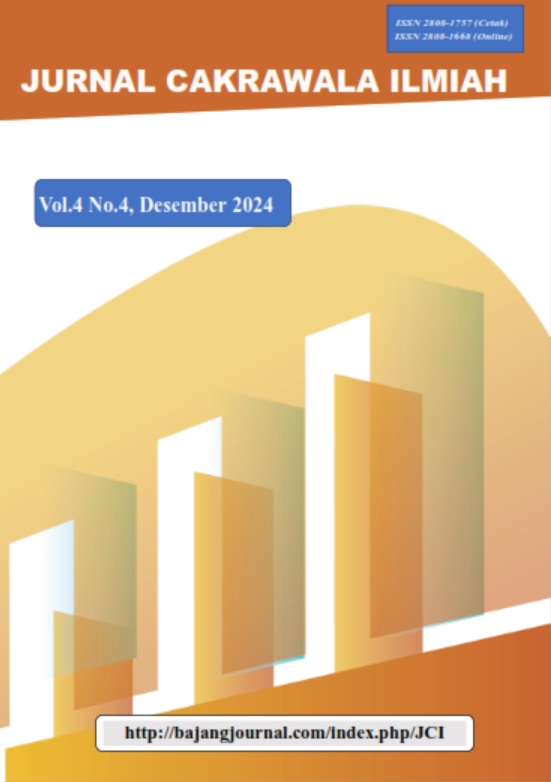PERAN KETERAMPILAN KOMUNIKASI VERBAL ANTAR BUDAYA DALAM MENINGKATKAN TOLERANSI BERAGAMA DI SMPN 237 JAKARTA
Keywords:
Verbal communication, intercultural communication, religious tolerance, mixed methods, SMPN 237 JakartaAbstract
Indonesia is a country rich in cultural, ethnic, and religious diversity. This diversity is both an asset and a challenge in maintaining harmony amidst differences. One important element that creates harmony in a multicultural society is tolerance, which can be enhanced through intercultural verbal communication. This study aims to analyze the role of intercultural verbal communication in improving religious tolerance at SMPN 237 Jakarta, identify barriers and supporting factors in the effectiveness of verbal communication, and explore the perspectives of students from various religions, especially Islam and non-Islam, regarding the importance of communication in building tolerance. The research method used is mixed methods with a sequential exploratory design. This approach begins with collecting qualitative data through in-depth interviews to understand the phenomenon in detail, which is then complemented by quantitative data through distributing questionnaires to obtain more measurable results. Based on data analysis, it was found that barriers to verbal communication include differences in religious beliefs, ethnocentrism, racism, social prejudice, and discrimination. Supporting factors include cultural awareness, empathy, an open attitude, and an inclusive school environment. The results of this study are expected to provide theoretical contributions to the development of intercultural communication studies and practical benefits for educators, students, and educational institutions. The findings can be the basis for creating a tolerant and harmonious school environment, thereby supporting the creation of a young generation who appreciates diversity, can think critically, and has good communication skills to create a peaceful life.
References
A, S. L., Porter, R. E., & Mc Daniel, E. R. (2010). Komunikasi lintas budaya : communication between cultures / Larry A. Samovar, Richard E. Porter, Edwin R. McDaniel. Jakarta: Salemba Humanika.
Badan Pengembangan dan Pembinaan Bahasa. (2016).
Darmastuti. (2013). Komunikasi Antarbudaya: Konsep, Teori dan Aplikasi. Yogyakarta: Buku Litera Yogyakarta.
Hasan, M. S. (2019). Internalisasi Nilai Toleransi Beragama. Dar - El ilmi: Jurnal Studi Keagamaan, Pendidikan, dan Humaniora.
Khairana, K., & Fauzi, A. (2020). HAMBATAN KOMUNIKASI LINTAS AGAMA. AT-TAZAKK.
Simbolon, & Debora. (2012). Memahami Komunikasi Beda Budaya Antara Suku Batak Toba Dengan Suku Jawa Di Kota Semarang (Studi Pada Mahasiswa Suku Batak Toba Dengan Suku Jawa Di Universitas Semarang). Journal: The messenger 4, 43-49.
Downloads
Published
How to Cite
Issue
Section
License
Copyright (c) 2024 Jurnal Cakrawala Ilmiah

This work is licensed under a Creative Commons Attribution-NonCommercial 4.0 International License.
















